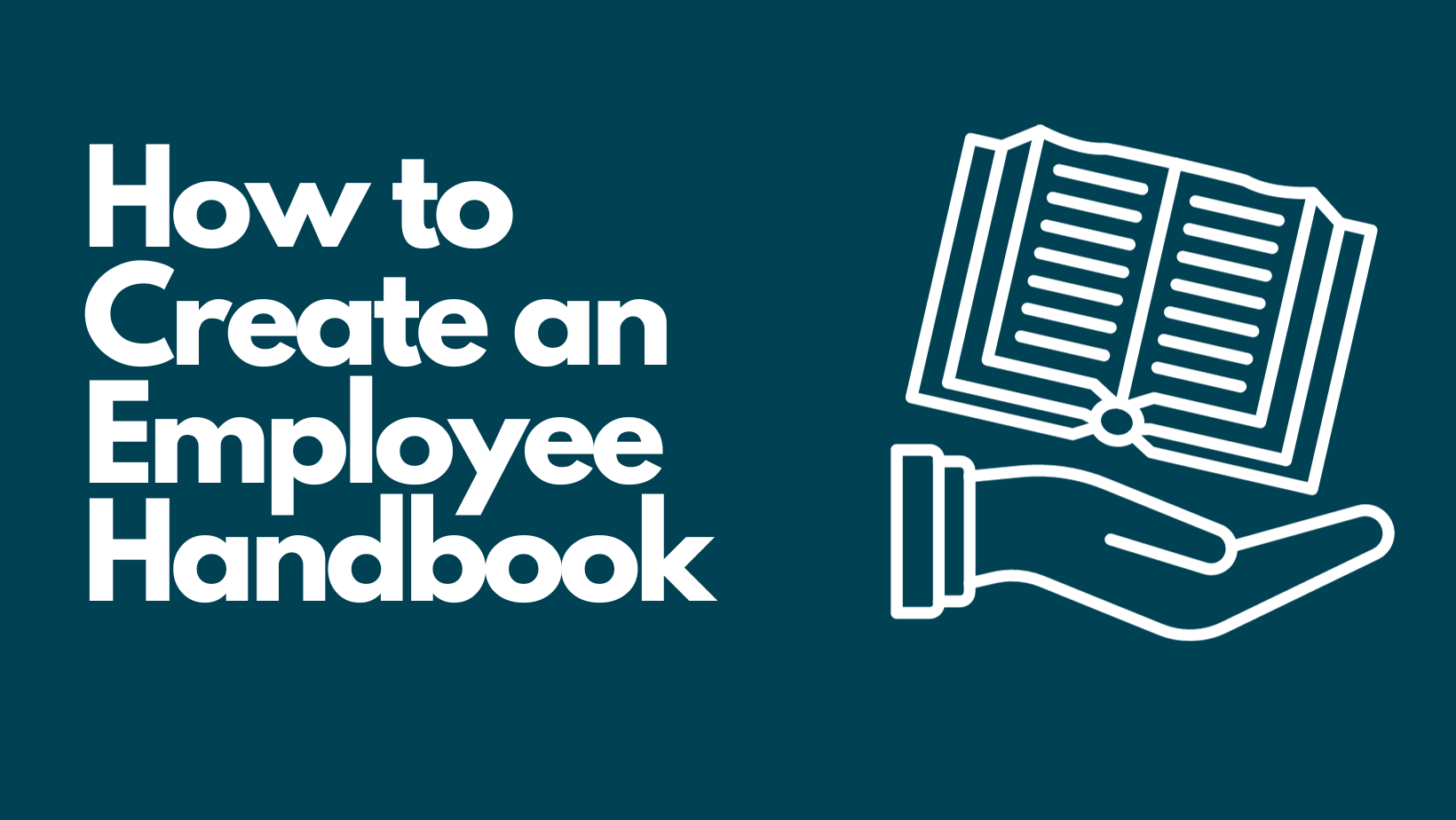
The Ultimate Guide to Creating a Comprehensive Employee Handbook: Essential for Your Business
Imagine trying to navigate a new city without a map, or sailing a ship without a rudder. Confusing, right? For any business, big or small, the workplace needs its own clear navigation tool – and that’s precisely what an employee handbook is.
Often overlooked or hastily put together, a comprehensive employee handbook is far more than just a stack of rules. It’s a foundational document that outlines your company’s values, policies, and expectations, serving as an invaluable resource for both your team and your business.
In this ultimate guide, we’ll walk you through everything you need to know about creating an effective, legally sound, and truly comprehensive employee handbook, even if you’re a complete beginner to HR documentation.
Why Do You Need an Employee Handbook? It’s More Than Just Paperwork!
Before we dive into the "how," let’s understand the "why." A well-crafted employee handbook offers immense benefits:
- Clarity and Consistency: It provides a single, go-to source for employees to understand company policies, procedures, and expectations. This eliminates confusion and ensures everyone is on the same page.
- Legal Protection: Perhaps the most crucial benefit. A handbook can serve as a vital defense in the event of employee disputes, discrimination claims, or wrongful termination lawsuits. It demonstrates that employees were informed of policies (e.g., anti-harassment, disciplinary procedures).
- Sets the Tone and Culture: Your handbook is an opportunity to express your company’s mission, vision, values, and the kind of workplace environment you strive to create. It helps new hires understand what it’s like to work for you from day one.
- Streamlines Onboarding: For new employees, the handbook is an essential part of their orientation. It answers common questions and helps them quickly integrate into the company.
- Fairness and Equity: By clearly stating policies, you ensure that rules are applied consistently and fairly to all employees, reducing perceptions of favoritism or arbitrary decision-making.
- Reduces HR Workload: With clear policies in place, managers and HR spend less time answering repetitive questions or dealing with misunderstandings.
What Goes Inside? Essential Sections of Your Employee Handbook
Think of your handbook as a structured conversation with your employees. It should cover everything from the moment they join until they potentially leave. While every business is unique, certain sections are universal and critical.
I. Introduction & Welcome
This is your chance to make a great first impression and set the stage.
- Welcome Message: A warm greeting from leadership, expressing excitement for the new employee and reiterating the company’s mission.
- Company History & Mission Statement: Briefly explain how the company started, its purpose, and its long-term vision.
- Company Values & Culture: What are the core principles that guide your business? Teamwork, innovation, customer focus, integrity? Spell them out.
- Purpose of the Handbook: Clearly state that the handbook is a guide, not a contract, and that policies can be updated.
II. Employment Basics
These sections cover fundamental aspects of the employment relationship.
- At-Will Employment Statement: (If applicable in your state) Clearly state that employment is "at-will," meaning either the employer or employee can terminate the relationship at any time, with or without cause, unless otherwise stated by law or contract.
- Equal Employment Opportunity (EEO) Statement: Affirm your commitment to providing equal employment opportunities and prohibiting discrimination based on protected characteristics (e.g., race, gender, religion, age, disability).
- Americans with Disabilities Act (ADA) Statement: Outline your commitment to providing reasonable accommodations for qualified individuals with disabilities.
- Employment Classification: Define full-time, part-time, temporary, exempt, and non-exempt classifications, explaining their implications (e.g., eligibility for benefits, overtime).
- Recruitment & Hiring: Briefly touch upon your hiring practices and commitment to fair recruitment.
- Background Checks & Drug Testing: If applicable, state your policies regarding these pre-employment checks.
III. Compensation & Benefits
This section details how employees are paid and what benefits they receive.
- Pay Periods & Payday: When and how often employees are paid.
- Overtime Policy: For non-exempt employees, explain when and how overtime is calculated and approved.
- Paid Time Off (PTO):
- Vacation leave accrual, usage, and carryover policies.
- Sick leave policies (including compliance with local/state mandates).
- Company holidays observed.
- Personal leave.
- Health & Welfare Benefits:
- Health, dental, and vision insurance eligibility.
- Life insurance, disability insurance.
- Retirement plans (e.g., 401(k)).
- Note: Provide an overview and refer employees to specific plan documents for details.
- Leaves of Absence:
- Family and Medical Leave Act (FMLA) if applicable (50+ employees).
- Bereavement leave.
- Jury duty leave.
- Military leave.
- Other personal leaves.
- Expense Reimbursement: Policy for business-related expenses.
IV. Workplace Conduct & Expectations
This is where you define the behavioral standards for your workplace.
- Code of Conduct: General expectations for professional behavior, respect, and integrity.
- Attendance & Punctuality: Policies regarding start times, breaks, lunch, reporting absences, and excessive tardiness.
- Dress Code: What is appropriate attire for your workplace?
- Anti-Harassment & Anti-Discrimination Policy: A clear statement that harassment and discrimination will not be tolerated, including definitions, reporting procedures, and consequences. Crucial for legal protection.
- Workplace Violence Prevention: Policy outlining steps to prevent and respond to threats of violence.
- Drug & Alcohol Policy: Rules regarding substance use in the workplace.
- Smoking Policy: Where and when smoking is permitted.
- Conflict of Interest: Guidelines for avoiding situations where personal interests conflict with company interests.
- Confidentiality & Non-Disclosure: Policies on protecting company proprietary information, trade secrets, and customer data.
- Solicitation & Distribution: Rules about soliciting funds or distributing materials in the workplace.
- Gifts & Gratuities: Policy on accepting or giving gifts in a business context.
- Personal Use of Company Property: Guidelines for using company equipment (e.g., phones, vehicles) for personal reasons.
V. Technology & Data Use
In today’s digital world, these policies are non-negotiable.
- Computer & Internet Use: Acceptable use of company computers, networks, and the internet.
- Email & Communication Systems: Policies on professional use of company email, messaging apps, and monitoring expectations.
- Social Media Policy: Guidelines for employees’ use of social media, especially when it relates to the company or colleagues.
- Data Security & Privacy: Expectations for protecting company and customer data.
VI. Health & Safety
Ensuring a safe and healthy environment.
- Workplace Safety Rules: General safety guidelines, reporting accidents, and emergency procedures.
- Emergency Procedures: What to do in case of fire, natural disaster, or other emergencies.
- First Aid & Medical Emergencies: Procedures for handling injuries or medical incidents.
- Workers’ Compensation: Information on reporting work-related injuries.
VII. Employee Development & Performance
How you support and evaluate your team.
- Performance Reviews: How and when performance is evaluated.
- Training & Development: Opportunities for skill development and career growth.
- Promotions & Transfers: Policies for internal advancement.
- Disciplinary Action: A clear outline of the steps taken when policies are violated, from verbal warnings to termination. This is key for consistency and legal defensibility.
- Grievance Procedure: How employees can raise concerns or complaints without fear of retaliation.
VIII. Separation of Employment
Addressing the end of the employment relationship.
- Resignation Procedures: How employees should resign.
- Termination Procedures: Reasons for termination and the process involved.
- Exit Interviews: Explaining the purpose and process of exit interviews.
- Return of Company Property: Requirements for returning company assets upon departure.
- Final Paycheck & Benefits Continuation: Information on final pay and COBRA (if applicable).
The Creation Process: Step-by-Step
Building a comprehensive employee handbook might seem daunting, but breaking it down makes it manageable.
-
Research & Gather Information:
- Federal Laws: Understand laws like FLSA (Fair Labor Standards Act), Title VII, ADA, FMLA, OSHA.
- State & Local Laws: Crucially, research specific laws in your state, county, and city regarding minimum wage, sick leave, paid family leave, protected classes, and more. These vary significantly!
- Industry Standards: Look at handbooks from similar companies (if publicly available) for inspiration, but never copy directly.
- Your Current Practices: Document how your company actually operates. The handbook should reflect reality.
-
Outline & Draft:
- Use the sections outlined above as your framework.
- Start drafting each policy. Use clear, concise language. Avoid jargon.
- Be specific but also allow for flexibility where needed (e.g., "Company may modify…").
-
Customize for Your Company Culture:
- Infuse your company’s personality and values. Is your culture formal or casual? Professional yet fun? Let the tone of the handbook reflect that.
- Add unique benefits or perks your company offers.
-
Seek Legal Review (Non-Negotiable!):
- This is the MOST IMPORTANT step. A lawyer specializing in employment law in your state must review your draft. They will ensure compliance with all federal, state, and local laws, and identify any clauses that could inadvertently create an implied contract or legal risk.
- Do NOT skip this step. Generic templates often miss critical state-specific nuances.
-
Communicate & Implement:
- Once finalized, distribute the handbook to all employees.
- Hold a meeting or webinar to introduce the handbook, highlight key changes (if it’s an update), and answer questions.
- Obtain Acknowledgment: Have every employee sign a written acknowledgment form stating they have received, read, understood, and agree to abide by the handbook’s policies. Keep these signed forms in their personnel files.
-
Regularly Review & Update:
- Laws change, and so does your company. Plan to review your handbook at least annually, or whenever there are significant legal changes, new company policies, or shifts in your business operations.
- Communicate updates clearly to employees and obtain new acknowledgments.
Key Considerations & Best Practices
- Keep it Clear and Concise: Avoid overly legalistic language. Use simple sentences and everyday terms.
- Avoid "Contractual" Language: Do not use terms like "guarantee," "promise," or "permanent." Reinforce the "at-will" nature of employment (if applicable).
- Include a Disclaimer: A clear disclaimer upfront and/or at the end stating that the handbook is a guide, not a contract, and that policies can be changed by the company at its discretion.
- Make it Accessible: Provide the handbook in a format that is easily accessible to all employees (e.g., digital PDF, company intranet, printed copies). Consider translations if you have a multilingual workforce.
- Focus on Consistency: Ensure that policies in the handbook align with actual practices. Inconsistencies can undermine the handbook’s effectiveness and legal standing.
- Lead with Empathy and Fairness: While protecting the company, the handbook should also convey a sense of fairness and respect for employees.
Common Mistakes to Avoid
- Using a Generic Template Without Customization: A template is a starting point, not a finished product. It must be tailored to your specific business, industry, and local laws.
- Failing to Get Legal Review: As mentioned, this is a recipe for disaster. Laws are complex and ever-changing.
- Not Communicating the Handbook: Just handing it out isn’t enough. Explain its importance and answer questions.
- Not Obtaining Signed Acknowledgments: Without proof that employees received and understood the handbook, its legal defensibility is severely weakened.
- Letting it Become Outdated: An old handbook with obsolete policies is worse than no handbook at all, as it can be used against you.
- Being Too Rigid or Too Vague: Policies need to be clear enough to be understood and enforced, but flexible enough to adapt to unforeseen circumstances.
- Inconsistent Enforcement: If you have policies but don’t enforce them consistently, they lose their power and can create legal vulnerabilities.
Important Disclaimer
This article provides general information and guidance on creating an employee handbook. It is not legal advice. Labor and employment laws are complex and vary significantly by federal, state, and local jurisdictions. You must consult with an experienced employment law attorney in your specific state to review and approve your employee handbook before implementation. Relying solely on general advice or templates without legal review can expose your business to significant legal risks.
Conclusion
Creating a comprehensive employee handbook is a significant undertaking, but it’s an investment that pays dividends in clarity, consistency, and legal protection for your business. It’s the cornerstone of a well-managed workplace, fostering a professional environment where everyone understands the rules of engagement and feels supported.
Don’t view it as just a compliance document; see it as an essential tool for communicating your company’s values and building a strong, cohesive team. Start drafting today, prioritize that legal review, and equip your business with this vital guide for success.



Post Comment